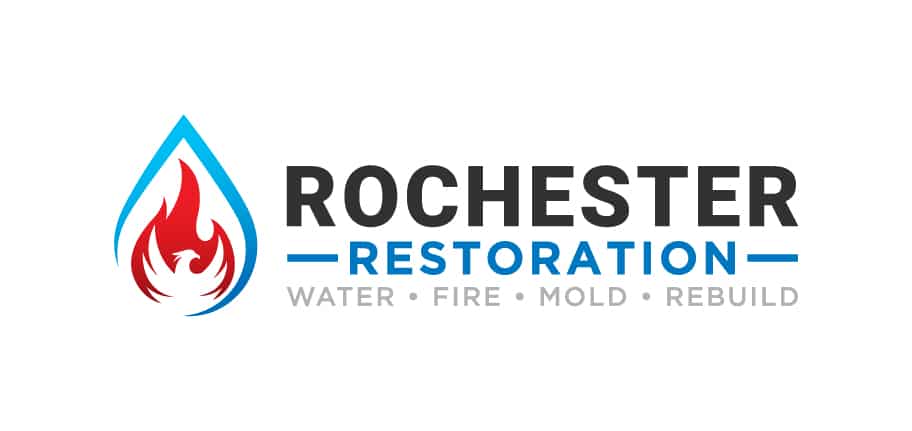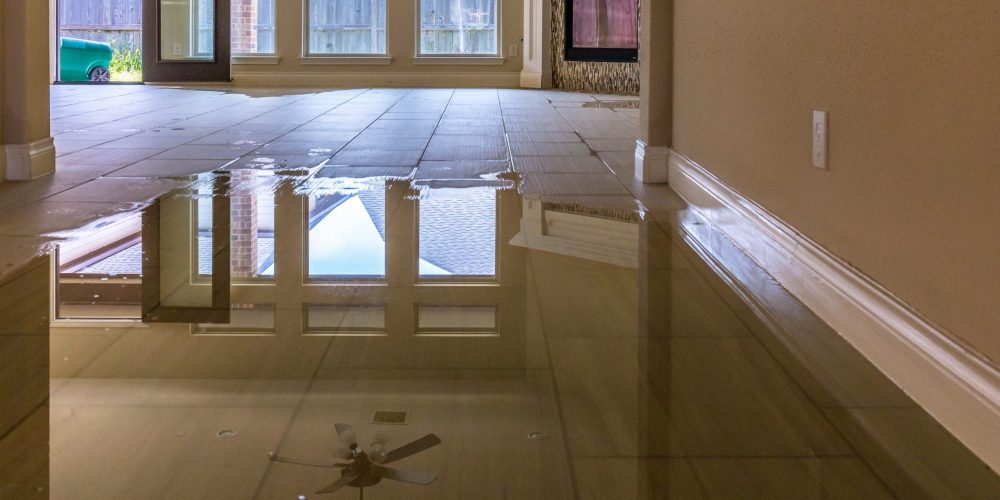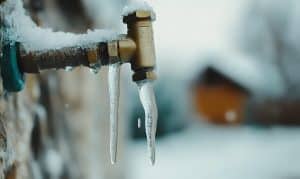At Rochester Restoration, we often hear homeowners ask, “Can water damage go away on its own?” And honestly, we get it. Life is busy, and when the signs of damage aren’t overwhelming, it’s easy to hope the issue will resolve itself. Unfortunately, water damage is one of those things that rarely gets better with time. In fact, when it is left unchecked, even minor water issues can evolve into major structural, health, and financial problems.
In this guide, we’re breaking down what really happens when water damage is ignored, the science behind why it lingers, and why timely action is crucial. Whether you’re dealing with a small leak or a major flood, we’re here to help you understand what’s at stake—and what you can do about it.
Key Takeaways
- No, water damage does not go away on its own. Moisture lingers, spreads, and causes further damage if left untreated.
- Quick action is essential. The first 24–48 hours are crucial in preventing mold growth and worsening damage.
- Even small leaks can cause big problems. Don’t underestimate slow or hidden sources of water.
- Visible dryness doesn’t mean total dryness. Water often hides behind walls, under floors, or inside insulation.
- Professional restoration is the safest choice. Experts can ensure that your home is thoroughly dried, sanitized, and restored, protecting your health and your property.
What Is Water Damage?
Water damage refers to any destruction or deterioration of materials due to the presence of water. This can include soaked drywall, warped wood, crumbling foundations, and mold growth. The source of the water can come from all places, like broken pipes, roof leaks, foundation seepage, floods, or even condensation from poor ventilation.
Water damage typically falls into three categories:
- Category 1: Clean Water – From sources like broken pipes or rainwater.
- Category 2: Gray Water – May contain contaminants (e.g., from washing machines or dishwashers).
- Category 3: Black Water – Heavily contaminated (e.g., sewage or floodwaters).
Even clean water can quickly become unsafe if not handled promptly. And unfortunately, no matter the source, water doesn’t just evaporate and leave your home unscathed.
“It’ll Dry Out on Its Own”
Many homeowners assume that as long as there’s no standing water, the issue will take care of itself. While it’s true that some moisture may evaporate over time, this is rarely enough to fully dry the affected areas, especially hidden spaces like behind walls, under floors, or within insulation.
Here’s why relying on air drying or “waiting it out” can be risky:
- Porous materials hold moisture. Drywall, wood, carpet, and insulation absorb water easily. They can remain wet long after the surface seems dry.
- Humidity can make it worse. Moisture in the air from improper drying can spread to unaffected areas, creating secondary damage.
- Mold thrives on moisture. Mold only needs 24–48 hours to begin growing in damp environments.
- Damage compounds over time. What starts as minor cosmetic damage can lead to structural issues, rot, and serious health concerns.
What Happens When You Ignore Water Damage?
Here’s what you risk when you assume water damage will go away on its own:
1. Mold Growth
Mold is one of the fastest and most dangerous consequences of water damage. Spores are naturally present in the air, and they only need a little moisture and organic material to grow. Once mold takes hold, it spreads quickly and can:
- Trigger allergies and asthma
- Lead to respiratory issues
- Cause structural damage to your home
- Lower property value
Once mold is present, grabbing the bleach for cleaning just isn’t going to cut it. Getting rid of mold requires professional remediation.
2. Structural Instability
Water can weaken key structural components, including:
- Wooden support beams and joists
- Drywall and plaster
- Subfloors and foundation materials
Over time, these materials can rot, warp, or collapse, posing a safety hazard and increasing the cost of repairs.
3. Electrical Hazards
If water seeps into walls or floors where wiring is present, it can create short circuits, fire hazards, or even electrocution risks. Water and electricity are never a good mix, and ignoring the risk can leave your entire home in a risky situation.
4. Pest Infestations
Moist environments attract pests like termites, cockroaches, and rodents. Once they find their way into your damp walls or flooring, they can do additional damage and are notoriously hard to remove.
5. Permanent Staining and Odors
Water-damaged materials can stain over time and develop persistent odors that are difficult to remove. Carpeting, upholstery, and wood floors can all retain musty smells that only professional cleaning or replacement can fix.
How Long Does It Take for Water Damage to Set In?
Water damage doesn’t wait. Here’s a general timeline of how quickly things can deteriorate:
- Within Minutes: Water spreads quickly, soaking everything it touches.
- Within Hours: Drywall swells, furniture finishes discolor, and carpet padding begins to degrade.
- Within 24–48 Hours: Mold can begin to grow; structural materials start to weaken.
- After a Week: Severe contamination sets in, and the home may require extensive demolition and reconstruction.
- After a Month: Deep-set structural damage, major mold infestations, and skyrocketing costs for repair and remediation.
The sooner you respond, the better chance you have of minimizing damage and cost.
When Can You Handle Water Damage Yourself?
There are some situations where small water incidents may not require professional help—like a cup of spilled water or a minor leak caught early.
You should only consider DIY cleanup if:
- The water source is clean (Category 1).
- The affected area is small and on a hard surface, like tile or vinyl.
- You are able to dry it within 24 hours using proper tools (fans, dehumidifiers).
- There’s no sign of mold, discoloration, or lingering smells.
If any of these conditions aren’t met, or if you’re not completely sure, it’s best to call a professional like Rochester Restoration. When it comes to dealing with water damage, we say it’s better to be safe than sorry. Asking a professional for their advice could give you the green light for doing the work, or tell you exactly why you need professional assistance. When you work with a trusted and dependable company (like us!), you don’t have to worry about them trying to sell you a bill of goods, and can get an honest professional opinion on the matter.
Why Professional Water Damage Restoration Matters
We bring more than just equipment to Rochester Restoration: we bring expertise. Here’s how our team handles water damage the right way:
1. Thorough Inspection
We assess the extent of the damage using moisture meters, thermal imaging, and visual inspection. Many homeowners are surprised to learn how far moisture has traveled beyond the visible areas.
2. Water Extraction
We use high-powered pumps and vacuums to remove standing water quickly and effectively.
3. Drying and Dehumidification
Professional-grade air movers and dehumidifiers are strategically placed to dry out walls, floors, and substructures, something fans alone can’t do.
4. Cleaning and Sanitizing
We treat affected areas with antimicrobial solutions to prevent mold growth and remove contaminants.
5. Restoration and Repairs
From drywall and flooring repairs to complete reconstruction, we restore your property to pre-damage condition.
Don’t Wait—Act Now
At Rochester Restoration, we understand how overwhelming water damage can feel. It’s tempting to ignore the problem and hope it resolves itself. But trust us when we say—water damage doesn’t disappear. It waits, it worsens, and it silently chips away at your home’s safety, value, and comfort.
If you suspect water damage, even if it seems minor, give us a call. Our compassionate team will walk you through the process and provide the professional care your home deserves. We’re not just here to fix what’s broken—we’re here to restore your peace of mind. Call us now, and let us get started with our restoration service!






